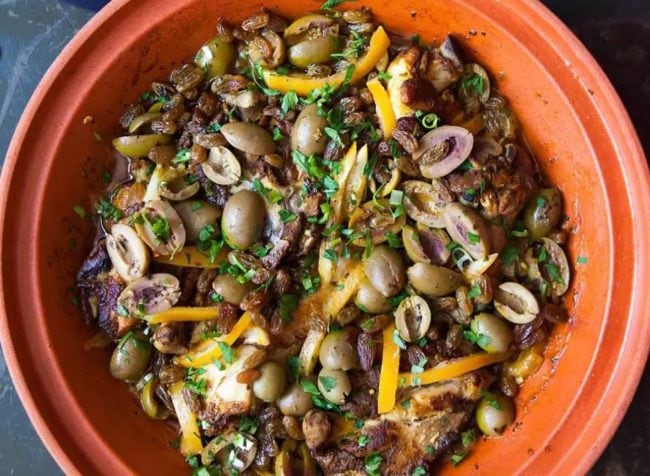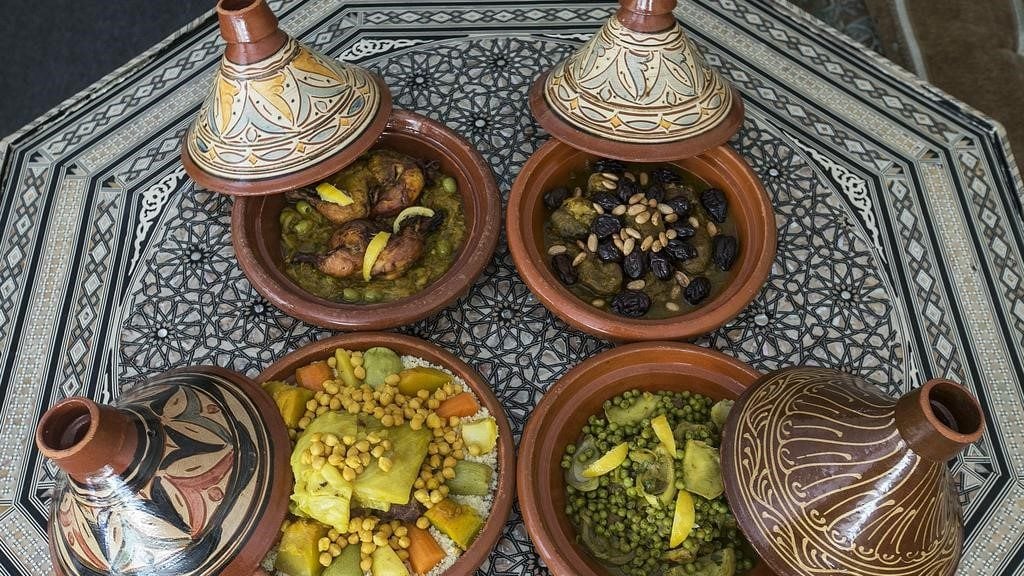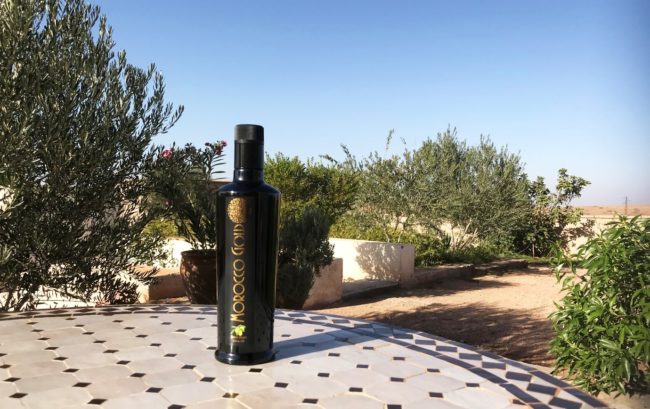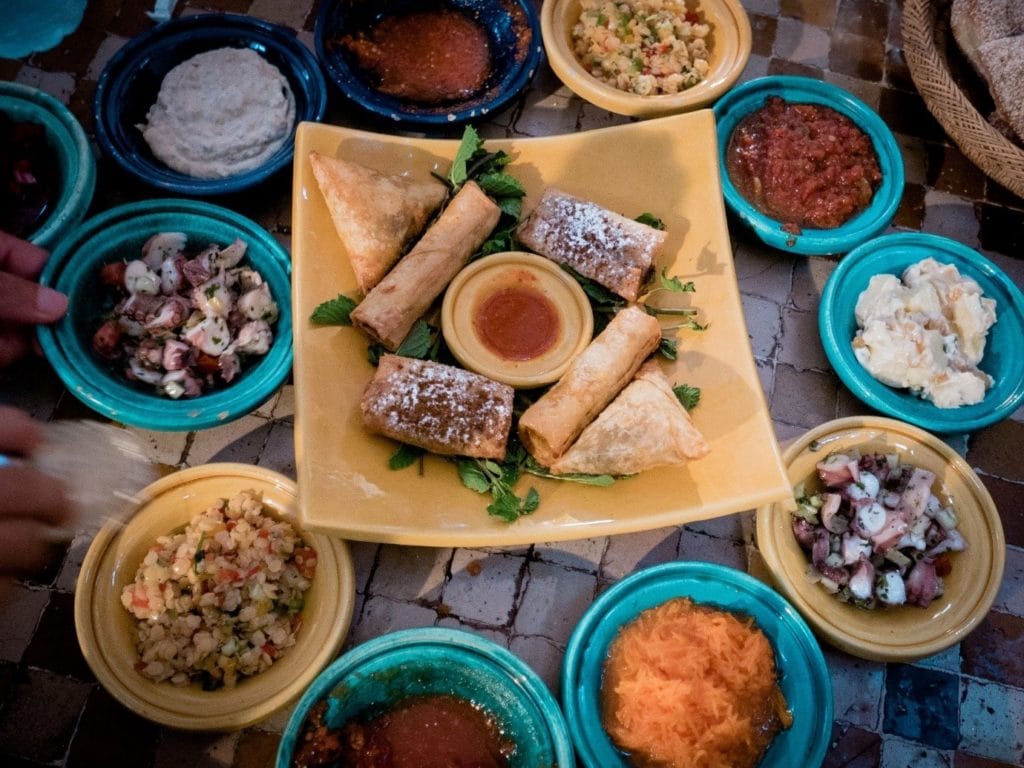What Makes Moroccan Cuisine The Finest In The World?
Updated July 26th 2024

Summary
- Moroccan olive growers manually harvest an average of 224,500 hectares of the crop.
- Moroccan cuisine combines Arab, Berber, African, Mediterranean and European influences and has historically been referred to as “a cuisine of the kings”.
- Olive oil is essential in Moroccan dishes such as couscous, roasted chicken, tagine, different pasta recipes, seafood, and as a dressing for different salads.
Contents
What is it that we love about Moroccan Cuisine and why is Moroccan olive oil the best olive oil you could choose for your kitchen? These are big questions and big claims, but we have lots of answers so read on!
Moroccan Cuisine and Moroccan Olive Oil: Why Are They So Closely Linked?
The use of a quality Moroccan Olive Oil in Moroccan cooking as been an integral part of the culture for a very long time. As reported recently in Morocco World News, Moroccans consider olive oil to be one of the healthiest foods they consume daily; it is also a key ingredient in many famous traditional Moroccan dishes.
Generally speaking, Moroccan cuisine follows the principles of a plant-based Mediterranean diet, with a key emphasis on fruit, vegetables, nuts, seeds, whole grains and healthy fats – such as extra virgin olive oil.

What Makes Moroccan Extra Virgin Olive Oil Special?
Moroccan extra virgin olive oil is often distinguished by its bitter or peppery flavour – a result of minimal processing which allows it to retain its health-giving antioxidant properties.
In fact, the oil derived from Morocco Gold’s latest Harvest has the highest ever recorded polyphenol content at 644mg/kg and a very low acidity level of 0.2%.
Our olives are grown in a valley that is about 2,000 feet above sea level. This helps to create the additional climatic challenges that encourage polyphenol uptake within the olive tree. It is also an area with naturally occurring high phenols in the soil itself.
Over time layer upon layer of decomposed organic matter has contributed massively to the rich content of phenols in the local soil. This contributes to the very high levels polyphenols found in Morocco Gold Extra Virgin olive oil.
Thirdly, our olives are picked when the fruit is young and green. As the olives age on the tree, the colour of the olive changes to red and then black. The olive increases in size producing more oil, but the polyphenol level decreases. Within the farming community there is long experience. Furthermore, to maximise the polyphenol levels we harvest our olives at the optimum time.
Where does Morocco Stand on the Olive Oil World Stage?

According to the International Olive Council, Morocco is the sixth-largest producer of olive oil in the world, producing up to 145,000 tons in 2019. Moroccan olive growers manually harvest an average of 224,500 hectares of the crop.
As explained by MWN the majority of Morocco’s olives, 65%, are destined for pressing into oil while 25% are set for canning. The country has a modern and semi-modern sector for pressing olives, with 948 units and a capacity of 1.8 million tons per year. Morocco’s traditional sector boasts 11,000 “ma’asras,” the traditional Moroccan olive press. Ma’asras operate intermittently depending on the size of the harvest and generally meet individual or local consumption needs.
As with the majority of Moroccan virgin olive oil, the source for Morocco Gold extra virgin olive oil is the Picholine olive variety, an important variety with many healthy components. Olive oil is essential in Moroccan dishes such as couscous, roasted chicken, tagine, different pasta recipes, seafood, and as a dressing for different salads.
How Do I Serve A Traditional Moroccan Feast?
Tradition dictates a certain order when serving Moroccan cuisine. First, salads are served. These can include a mixture of raw and cooked vegetables, such as beetroots, carrots, cucumber with orange-blossom water, lemon, sugar and olive oil.
Zaalouk is another popular salad dish, made from aubergine and tomatoes, with garlic, olive oil, and spices. This delicious and flavorful dish is often served as a starter or side dish and is enjoyed by many for its rich, smoky taste and smooth texture. It is typically garnished with fresh herbs, adding a touch of freshness to the robust flavors.
Taktouka is another staple, consisting of a purée of tomatoes and green pepper. This vibrant and savory dish is known for its slightly sweet and smoky profile, making it a perfect accompaniment to grilled meats or as part of a larger spread. Taktouka is often seasoned with a blend of spices and herbs, enhancing its already delightful taste and making it a favorite among those who appreciate bold and hearty flavors.
Also served are briouat or birwat, sweet triangular or cylindrical pastries filled with meat or chicken mixed with cheese, pepper, and lemon. These delightful pastries are often fried until golden and crispy, offering a delicious contrast between the crunchy exterior and the savory, flavorful filling.
Aside from the salads, harira soup – made with tomatoes, lentils, chickpeas and lamb – is also a favourite starting dish on Moroccan dining tables, particularly during Ramadan.
The first main dish can then be tagine. Tagine became the name of the dish, but primarily it is the name of the pot you cook it in. A tagine can be made using lamb with prunes, or chicken, either in an onion sauce with dried apricots, or with olives and potatoes. A host might also serve b’sara (fava bean soup) or b’stilla (a pie containing pigeon or seafood) dishes to their guests.
Couscous tends to be part of the second main dish served along with others such as rfissa (chicken with lentils and pan-fried dough). This versatile and beloved grain is often steamed to perfection and served with a variety of vegetables, meats, or sauces. Dishes are always accompanied with bread, typically freshly baked and used to scoop up the delicious flavors, enhancing the overall dining experience.
For dessert, plates of fresh fruits and a cup of fresh mint tea are served, along with pastries such as kaab al ghazal (gazelle horn, a crescent-shaped cookie made of sweet-almond paste, orange blossom water, and cinnamon). These treats offer a delightful combination of flavors and textures, providing a sweet and refreshing end to the meal. Additionally, other traditional sweets like honey-drenched chebakia or almond-filled baklava might be included, adding to the array of delectable options.
To help with digestion and overall health, herb-infused teas are sipped at the end of the meal. The herbs include naanaa (mint), louisa (lemon-scented verbena), and sheba (wormwood). These aromatic teas are not only soothing but also known for their medicinal properties, aiding in relaxation and promoting a sense of well-being.
Cooking together in the kitchen is a cherished family tradition, where all the women gather to prepare meals and catch up on the latest news. This practice allows cooking skills to be passed down from generation to generation, ensuring that family recipes and culinary techniques are preserved and celebrated.
What Are The Influences Of Moroccan Cuisine?

Moroccan cuisine combines Arab, Berber, African, Mediterranean and European influences and has historically been referred to as “a cuisine of the kings”.
Paula Wolfert is an award-winning author from the United States, who has more than 40 years of experience with Mediterranean food. She has written nine books, two of them about Moroccan cuisine.
“Morocco is blessed,” she says. “Developed in the kitchens of the royal palaces of Fez, Meknes, Marrakech and Rabat, the four royal cities, it reached summits of perfection.”
Bisteeya for example, Wolfert explains, had its humble origins in a simple Berber dish of chicken cooked with saffron and butter, before it was revamped in the royal kitchens.
“It was combined with the primitive Arab pastry called trid, enhanced when Arabs later brought the fine art of Persian pastry-making to Morocco, and was further embellished with Andalusian ideas until it became the bisteeya we know today,” she says.
From a culinary point of view, cultural influences can be seen widely in the three gastronomic centres of the country.
“In the Berber city of Marrakech, the food is basically Berber, with a Senegalese and African influence. In the Arab city of Fez, the cuisine shows the influence of Andaluz, and in the Andalusian city of Tetuan, the Spanish influence is strongest, with some Ottoman traces.”
Wolfert
Portuguese Influence
Portuguese influence may be found in the cuisine of the Portuguese settlement cities on the Atlantic coast. Essaouira, a city of white buildings and blue shutters, became the home of a large Jewish population who worked out their own variations on the national cuisine. This unique blend of cultures has resulted in a rich tapestry of flavors and culinary traditions, making Essaouira a gastronomic destination. The Jewish community introduced new spices and cooking techniques, further enriching the local food scene and creating dishes that are cherished by both locals and visitors alike.
What, then, makes a cuisine great? The author says four things are required.
“The first is an abundance of fine ingredients, a rich land,” she says. “The second is a variety of cultural influences: the history of the nation, including its domination by foreign powers, and the culinary secrets it has brought back from its own imperialist adventures.
“Thirdly, a great civilisation. If a country has not had its day in the sun, its cuisine will probably not be great. Great food and a great civilisation go together. Last, the existence of a refined palace life. Without the demands of a cultivated court, the imaginations of a nation’s cooks will not be challenged.”
We have joined SABA, the Scottish African Business Association so we can promote and import this wonderful Moroccan extra virgin olive oil. Morocco Gold is trying to fix what we consider the broken olive oil industry that exists at the moment and even if the UK were to leave the EU our standards will always be the highest quality.
